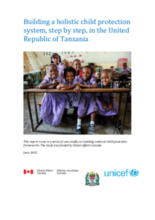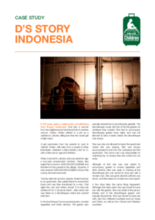Displaying 191 - 200 of 338
This case study of the child protection system in the United Republic of Tanzania is part of a UNICEF global initiative, undertaken in collaboration with Global Affairs Canada to document national child protection frameworks to gain an understanding of the country, the response of government and other actors, as well as other factors contributing to success in protecting children from violence, exploitation and abuse.
The case study, which accompanies the Global Study on Sexual Exploitation of Children in Travel and Tourism, tells the story of Kate, a woman from the US who was sexually exploited as a child.
This document provides guidelines to reintegrating trafficked and displaced children in Nepal, based on the approach and methodology developed and utilized by Next Generation Nepal (NGN) and The Himalayan Innovative Society (THIS).
The case study, which accompanies ECPAT's Global Study on Sexual Exploitation of Children in Travel and Tourism, tells the story of Dahlia, a 15 year-old girl from Indonesia who is a survivor of child sexual exploitation.
This briefing outlines what current research tells us about the nature of peer-on-peer abuse, and considers what this might mean for building a response.
The Dutch Ministry of Security and Justice has developed this flyer, along with ECPAT Netherlands, Better Care Network Netherlands and Terre des Hommes Netherlands, to motivate foreign organizations working with children to ask for a Certificate of Conduct when recruiting Dutch volunteers or employees.
This video was produced as part of the “Don’t Create More Orphans” Campaign, developed by Child Safe Network, Friends International, and partners.
This technical assistance brief answers the question “What steps can a judge take when a child runs away or goes missing from care?” The brief is intended to educate juvenile and family court judges in the United States on the steps to be taken to assist in in locating and recovering children who go missing from care.
This video, from Forget Me Not, features the story of Alisha, a young girl in Nepal who was separated from her family and taken to a children’s home in Kathmandu.
Anna McKeon, consultant for the Better Volunteering Better Care initiative, presented at a launch event of a new report on orphanage volunteering from Next Generation Nepal.








